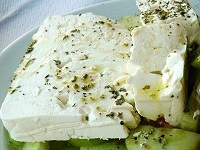Umbria Bianco (Italy)
Umbria Bianco is a term used to describe white wines produced in Umbria.
It is often a blend of the local grapes Grechetto and Trebbiano, but also from grapes like Chardonnay, Sauvignon Blanc, Pinot Bianco, Riesling and Malvasia.
Umbria Bianco Flavors
Typical Umbria Bianco flavors are Citrus, Apple, Pear, and Peach.
Hints of White Flowers, Herbs, Almonds, and Salty Minerals.
Lemon |
Apple |
Pear |
White Peach |
White Flowers |
Bitter Almond |
Nuts |
Seashell |
Umbria Bianco Profile
Umbria Bianco is fruity, floral and acidic:
| SUGAR: | Dry (3 g/l) |
| BODY: | Medium |
| FRUIT: | High |
| ACIDITY: | Medium Plus |
| ALCOHOL: | 12-13% ABV |
| Serving temperature: 10-12°C (50-54°F) | |
Umbria Bianco Food Pairing
Umbria Bianco is great as Aperitif, with Starters, Vegetables and Seafood.
Aperitif |
Salads |
Antipasti |
Pasta |
Fish |
Seafood |
White Meat |
Soft Cheese |
Excellent Pairings
Antipasti. Sandwiches. Focaccia.
Green Salads. Asparagus. Avocado. Artichokes.
Onion Soup. Gazpacho. Ribollita Toscana (Beans Soup).
Ham and Melon. Egg Dishes. Omelette.
Grilled and Fried Fish. Seafood.
Smoked Salmon. Baccalà. Bacalao.
White Meats. Fowl. Oca Arrosto (Roasted Goose). Rabbit.
Cheeses
Soft and Fresh Cheeses.
Brie. Camembert. Washed-Rind. Robiola.
The Ideal Glass for Umbria Bianco
A Tulip Shaped Glass with a slightly smaller bowl can be suitable for various dry white wines.

|
The glass guides the wine to the center of your mouth, avoiding the sides where acidity is less pleasant.
A smaller bowl also helps to serve smaller quantities, and keep the wine cold. It also helps if you hold the glass by the stem! |
Umbria Bianco Cheese Pairing
Opt for cheeses with moderate saltiness and creaminess to balance the wine's acidity. You can also add accompaniments like fresh fruits (grapes, apples, pears), nuts (almonds, walnuts), or a light drizzle of honey to enhance the pairing.
Fresh and Mild Cheeses
Mozzarella: Its delicate flavor pairs well with the wine's lightness.
Ricotta: Especially good if served with a drizzle of honey or fresh fruits.
Goat Cheese (Feta): The tanginess complements the subtle fruit notes in Umbria Bianco.
Soft Cheeses
Fontina: Its nutty, buttery qualities make a good match.
Brie: The creamy texture and mild flavor work beautifully with Umbria Bianco.
Primo Sale: Similar to Brie but more flowerly, herby, and salty.
Semi-Soft Cheeses
Asiago: Lightly aged Asiago adds a complementary tang to the wine.
Gruyère: Mildly nutty and sweet, enhancing the wine's subtlety.
Blue Cheeses (for contrast)
Robiola: Its mild creaminess contrasts nicely without overpowering the wine.
If You Like Umbria Bianco
You May Also Like:
About Umbria Bianco
Umbria Bianco wines are made from white grapes that grows in the region. The wines can vary in style from light and crisp to full-bodied and complex, depending on the grapes and the winemaking techniques.
The combination of local and international grapes allows winemakers in Umbria to craft a diverse range of wines to suit different preferences. Typical grape varieties are:
Grechetto is the most important grape in Umbria. It is known for its aromatic qualities, and is often the backbone of Umbria Bianco wines.
Procanico (Trebbiano Toscano) is another local grape. It's often blended with Grechetto to add acidity and structure to the wines.
Chardonnay is an international grape. It can contribute with richness and complexity to the wines.
Sauvignon Blanc is another international grape. It can add aromatic qualities and a crisp, zesty character.
Vermentino (native to Tuscany and Sardinia) is often used to add freshness and floral notes to the wines.
Pinot Bianco is occasionally used in Umbria, contributing elegance and delicate flavors.
Viognier is used in some modern styles of Umbria Bianco, adding body and texture to the wines.
Malvasia is used to add aromatic complexity and sweet notes to sweeter wines.
Sémillon is used in to add body and sweetness to dessert wines.
Region Umbria

Climate
Umbria is characterized by rolling hills, valleys, and vineyard-covered landscapes. The region has a continental climate with hot summers and cold winters.
The diverse topography and varied elevations contribute to different microclimates well suitable for grape cultivation.
Soil
The soils vary from clay and sand in the valleys to limestone and marl in the hills.
Black Grapes |
White Grapes |

22% Sangiovese |

|
Red Wines |
White Wines |

|

|


DOCG Wines
Sagrantino Di Montefalco
Torgiano Rosso Riserva
DOC Wines
Amelia DOC
Assisi DOC
Colli Altodiberini DOC
Colli Del Trasimeno DOC
Colli Martani DOC
Colli Perugini DOC
Corbara Lake DOC
Montefalco DOC
Orvieto DOC
Rosso Orvietano DOC
Spolete DOC
Todi DOC
Torgiano DOC
Trebbiano Spolentino DOC
Alcohol can be addictive. Always drink in moderation.
© Copyright 2015-2025 W3 Wine School. All Rights Reserved.







